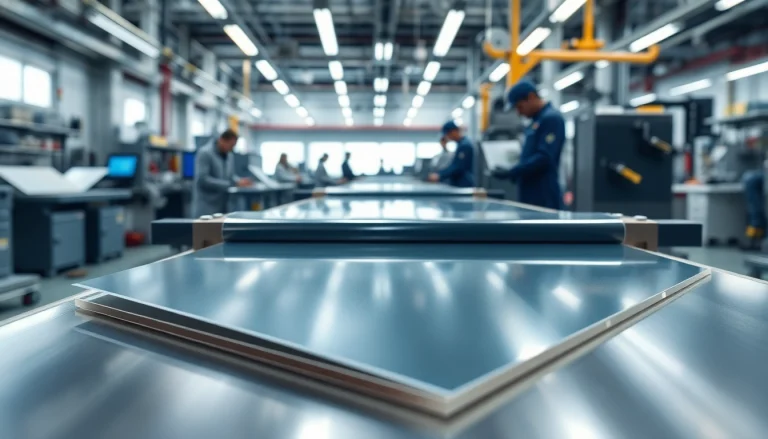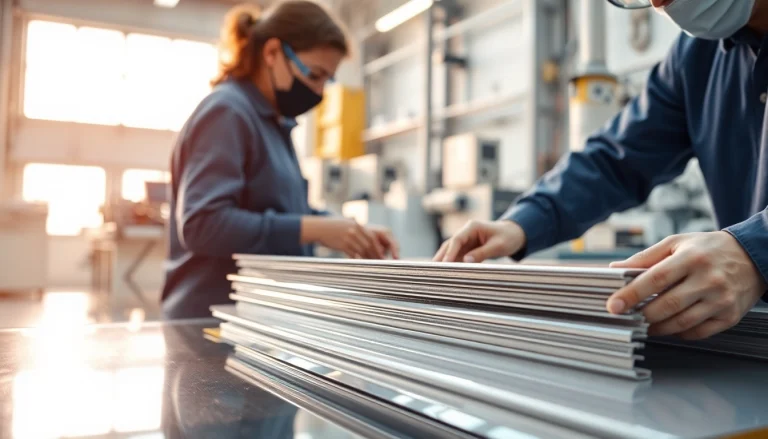
Understanding Needle Guns
What is a Needle Gun?
A needle gun is a versatile tool primarily used for surface preparation in various industrial applications. Distinct from its historical namesake, the needle gun firearm, this tool employs a series of rapidly moving needles to clean, strip, or prepare surfaces for further treatment. By providing a high-impact solution, needle guns can effectively remove rust, paint, and other contaminants from metal surfaces, ensuring optimal adhesion for subsequent coatings or treatments. Today’s needle guns can be either pneumatic or electric, offering differing advantages depending on the specific needs of the user.
Different Types of Needle Guns
Needle guns are categorized based on their operation method, size, and intended use. The main types include:
- Pneumatic Needle Guns: Powered by compressed air, these are the most common type and are favored for their high efficiency. They can operate at a variable speed, making them ideal for delicate surface work.
- Electric Needle Guns: These are electrical alternatives to pneumatic guns and are often lighter, making them easier to handle for extended periods. Electric needle guns are less noisy and do not require a compressor, thus offering more portability.
- Battery-Powered Needle Guns: A newer entry into the market, battery-powered guns provide the freedom of mobility without the constraints of cords or compressors. They are perfect for remote locations but may be less powerful than their pneumatic counterparts.
- Heavy-Duty Models: Designed for industrial applications, these needle guns come equipped with more powerful motors and additional features suited for the rigors of frequent, heavy use.
Applications in Various Industries
Needle guns have found applications across diverse industries due to their robust capability to prepare surfaces effectively:
- Manufacturing: Essential for pre-treatment of metal surfaces before applying coatings or paints.
- Aerospace: Often employed to remove protective coatings and contaminants from aircraft components.
- Shipbuilding: Useful for cleaning hulls and metal surfaces from corrosion, salt, and other marine contaminants.
- Automotive: Ideal for stripping old paint and rust from vehicle bodywork to ensure proper repainting.
- Construction: Engaged in surface preparation during renovation projects, especially for steel structures.
How to Choose the Right Needle Gun
Key Features to Look For
When selecting the appropriate needle gun for your needs, consider the following features:
- Needle Configuration: The number of needles can significantly impact the gun’s efficiency. More needles typically mean quicker work, but the choice should align with the surface type and required precision.
- Air Consumption: For pneumatic guns, check the CFM (Cubic Feet per Minute) requirements to ensure compatibility with your air compressor.
- Weight and Ergonomics: A lightweight and ergonomic design reduces user fatigue during extended use, making it crucial for selection.
- Adjustable Speed: Consider options that allow you to control the speed. This can enhance the versatility of the tool for various applications.
- Durability: Look for robust materials that can withstand harsh working conditions and extended periods of use.
Best Brands and Models
The needle gun market features several reputable brands known for their quality and performance. Some of the top models include:
- Ingersoll Rand: Renowned for their pneumatic needle scalers, offering a balance of power and efficiency.
- Chicago Pneumatic: Known for their reliable needle guns with excellent ergonomic features.
- JET: Offers both electric and pneumatic options, known for durability and high performance.
- Makita: Provides innovative solutions with lightweight models catering to DIY and professional use.
- Harbor Freight: Offers budget-friendly options for those needing basic functionalities without compromising quality significantly.
Price Range and Value Comparison
The price of needle guns varies widely based on brand, type, and features. Entry-level pneumatic needle guns can start around $50, while high-end professional models can exceed $500. It’s essential to consider the long-term value, including reliability, warranty, and performance, rather than solely focusing on the initial purchase price. Users should weigh the potential savings from increased efficiency against the cost of the tool to make an informed decision.
Safety Practices When Using Needle Guns
Protective Gear and Equipment
Safety is paramount when operating needle guns due to the high-velocity impacts involved. Here are essential protective gear recommendations:
- Earmuffs/Headphones: To protect your hearing from loud noise generated by the tool.
- Goggles: Essential to safeguard your eyes from flying debris during operation.
- Respirators: Important for filtering dust, paint particles, or any harmful substances being removed.
- Gloves: To protect your hands from vibrations and sharp edges while handling materials.
- Steel-Toe Boots: Provides further protection while working in hazardous environments.
Operational Safety Tips
To minimize risk while operating a needle gun, adhere to the following guidelines:
- Always read the manufacturer’s instructions before use.
- Ensure the work area is well-ventilated to avoid inhaling harmful dust and particles.
- Secure loose clothing and long hair to prevent entanglement in the tool.
- Do not direct the needle gun at yourself or others, especially when in operation.
- Regularly inspect the tool for defects or damages before each use.
Common Mistakes to Avoid
Awareness of common pitfalls can enhance safety and effectiveness:
- Ignoring Maintenance: Neglecting regular maintenance can lead to tool failure and unsafe conditions.
- Using Incorrect Air Pressure: Operating the gun at inappropriate pressure can affect performance and safety.
- Improper Handling: Failing to grasp the tool correctly can result in accidents; always ensure a firm grip.
- Overexertion: Working for extended hours without breaks can cause fatigue, increasing the risk of accidents.
Maintaining Your Needle Gun
Cleaning and Care Instructions
Proper maintenance enhances the longevity and performance of your needle gun. Follow these steps:
- Daily Cleaning: After usage, remove residual dust, paint, or material from the needles and outer casing using a soft brush or cloth.
- Lubrication: Regularly oil the moving parts with appropriate lubricant to ensure smooth operation.
- Needle Inspection: Frequently check needle conditions for wear or damage, replacing them as necessary to maintain efficiency.
- Storage: Store in a dry, dust-free environment, preferably in a designated tool case, to prevent damage.
Common Issues and Troubleshooting
Being proactive about potential problems can save time and money:
- Reduced Performance: If the tool is less effective, check for clogged needles or impaired air supply.
- Excessive Vibration: This can indicate wear on the needles or internal components; inspect and replace any damaged parts.
- Air Leaks: Inspect hoses and connectors for leaks if the tool operates inefficiently.
When to Seek Professional Service
If you encounter issues beyond minor troubleshooting, consider seeking professional help:
- Persistent problems even after maintenance.
- Seeking to upgrade components without risk of losing the quality of work.
- Regular servicing for professional-grade models to maintain peak performance.
Future Trends in Needle Gun Technology
Advancements in Design and Functionality
The future of needle guns appears promising, with trends leaning towards greater efficiency and user-friendliness. Innovations may include:
- Smart Tool Integration: Advanced models may include sensors to optimize performance based on the material being worked on.
- Ergonomic Improvements: Innovations in design for better user comfort and reduced fatigue during extended use.
- Sustainable Manufacturing: A shift towards eco-friendly materials and practices in construction.
Environmental Considerations
As environmental awareness increases, future needle gun designs might focus on reducing waste and minimizing toxicity:
- Development of needle guns that minimize airborne particles.
- Tools designed to operate effectively with sustainable practices, promoting efficient use of resources.
Market Predictions and Consumer Demand
Market trends indicate a growing demand for needle guns driven by advancements in technology and increased awareness of surface preparation importance:
- Industries focusing on preventive maintenance will likely fuel the increase in needle gun use.
- As more users recognize the benefits of professional-grade tools, there’s potential growth in demand across various sectors.
- Adaptation to different working conditions, such as confined spaces or different surface types, will enhance tool versatility.






